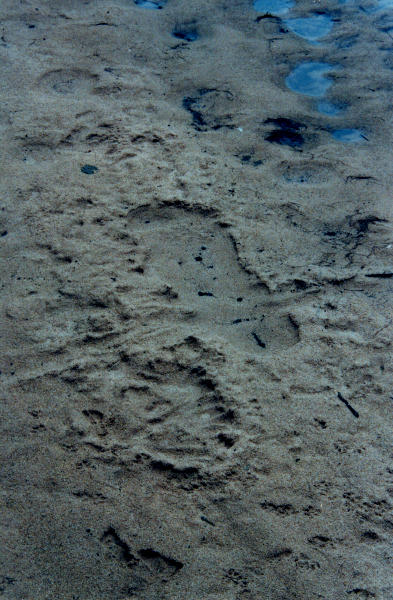Results of the Gilroy South-eastern New South Wales Yowie Expedition.
by Rex Gilroy
Copyright © Rex Gilroy 2008.
This investigation, part of the on-going “Operation Yowie” project, aimed at gathering good circumstantial, as well as possible physical evidence, on the existence of these relict hominids.
Early pastoralists and others who penetrated the vast, virtually inaccessible mountainous forest country now included in the Wadbilliga and Deua National Parks sometimes reported having heard loud eerie hominid cries while around their campfires at night, or heard by day, cries echoing down the deep gullies.
There were claims also of sightings in those jungles, sometimes of small male or female 'ape-like' creatures, but also of beings two or even three times the height of a normal human carrying large wooden or stone clubs. These, and many more tales continued on into the early 20th century, and persists into the 21st century among the modern-day inhabitants of the Wadbilliga and Deua wilderness foothills.
It was these traditions that drew Heather and I to this region, during our October-November 2000 south-eastern NSW Yowie field expedition. On Thursday 2nd November, we made one of the most astounding finds of our almost 30 years partnership. Early that overcast morning we were driving inland from Bodalla on our way to the Deua National Park, when we crossed over the 3m high Eurobodalla bridge on the Tuross River.
As I happened to look down at a sandbar on my [passenger's] side I spotted, deeply embedded in the sand, a huge hominid foot impression. Pulling up on the north bank we walked back to the bridge's centre, below which was the sand bar containing the huge footprint.
The Tuross River is tidal, so that when the tide is out the river hereabouts virtually dries up, exposing its sandy bottom in many areas, particularly at this spot. Below the bridge the sandbar was 9 metres or so in width by just over 18 metres length, the bridge cutting across its centre, with river water flowing eastwards to the sea.


















